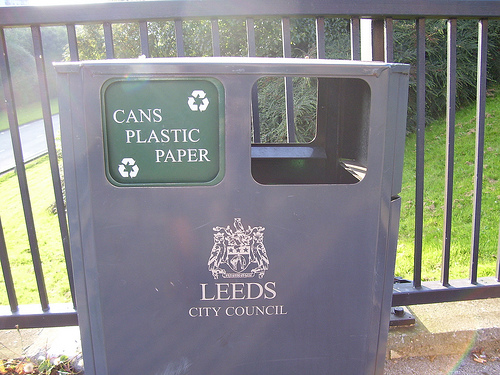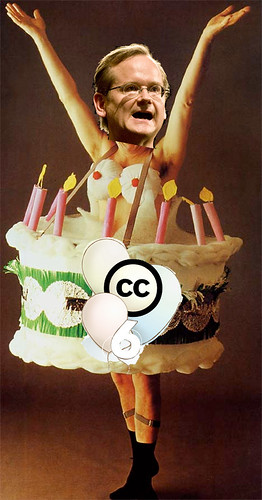The Hidden Value of Creative Commons April 16, 2009
Posted by lborodkin in : Uncategorized , 6commentsOn Avvo.com, I recently answered this question on music sampling:
“What are the laws on sampling music for a beat?”
Here is my answer:
“Sampling” music sound recordings is taking a portion of a sound recording and reusing it as a portion of a distinctly altered musical work. Under the copyright law, this reuse and transformation creates what is called a “derivative” work.
In the absence of any other agreement or license, the creator of the original musical sound recording has a copyright in the musical sound recording when it is released commercially. This is regardless of whether the work is registered with the Copyright Office.
It is actionable copyright infringement to incorporate portions of a musical sound recording that has been commercially released into a new work unless (a) the copyright holder grants a license allowing both copying and the creation of derivative works or (b) the owner of the sound recording has made the music available for public use under a gratis Creative Commons license that permits derivative works.
You can search for musical sound recordings that have been made available to the public for beat sampling under a Creative Commons license at creativecommons.org. You must heed the Creative Commons-published guidelines for any particular work. Only works licensed for “remix,” that is, derivative uses, may be used for beat sampling. Some owners also restrict Creative Commons license to non-commercial uses, and/or a reciprocal “share alike” license. Most Creative Commons licenses require attribution, or credit, in lieu of a license fee. Any use that falls outside the Creative Commons guidelines for a particular work would be actionable copyright infringement.
That is the lawyer’s answer. But there is another side to using Creative Commons work that reveals the flip side of my previous post on why attribution matters in copyright law. Attribution is a way of finding and linking to people that you want to work with and who want to work with you. I discovered this for myself about a year ago by putting the photos in my free Flickr account into Creative Commons under a non-commercial, attribution, no derivatives license.
I had surprising and wonderful results. Every so often, I get a little Google news vanity alert about a photo that’s been credited on the Internet. One of my faves is the remix of Lawrence Lessig at the top of this post. It is actually a collage that was created by Andy on the fly for a G33k dinner. More profoundly, it has brought some wonderful people into my life.
Tag up your photos and try it yourself. If they’re on a free hosting service, what do you have to lose?
“Happy 6th Birthday Creative Commons” collage by netZoo/revolute. Shared under Creative Commons license -obviously – via flickr.
5 Little Ways to Be Greener in LA April 15, 2009
Posted by lborodkin in : Uncategorized , 15comments
In honor of Earth Day, April 22, 2009, here are five little things I learned at the recent How To Be Green in LA . . . and Beyond!” panel. The panel was co-moderated by my friend Michael Liskin and (literally) touchy-feely “eco-MacGyver” Darren Moore. It was hosted at LA co-working center Blankspaces as part of Jerome‘s Blankspaces Meetup Series.
You can view the full recap here. [Disclaimer: The video begins with a team-building exercise of rubbing each other’s shoulders. That’s the aforementioned touchy-feely.]
The panel had a lot of great knowledge, myth-busting, tips, reminders and encouragement. Here, in no particular order of magnitude, are five little takeaways from the night.
1. Play an outdoor sport.
Mike Hill of the Art of Sports and Apparel suggested doing something fun and active outdoors as a little baby step to build eco-awareness. It is elegant in its obviousness. Be outside. Remind yourself how lucky those of us are who have access to clean air, sunshine and healthy bodies. There is nothing like having to focus your mental energy on doing something physically difficult enough that you have to let go of material and abstract life clutter.
2. Cans are truly recyclable; plastic bottles aren’t.
Siel, aka GreenLAGirl, pointed our that her can of beer is greener than your bottled water. Some plastics claim to be bio-plastic and somewhat degradable. However, the chemical process of creating plastics forms a molecule that can never, ever be undone. There is simply nowhere else for it to go, other than the ocean and the landfill. By contrast, aluminum is a natural metal that can be recycled infinite times.
3. Commercial cosmetics are poison.
Karen Solomon of Opportunity Green admitted, straight up, that she did not fully realize how much lead and other toxins are in most big-time makeup brands until she read “The Ugly Side of Beauty” by Stacy Malkan. This scared me silly. The waste in cosmetics packaging has always been apparent, but I never knew that the contents of makeup were directly harmful to its users. Blithely, I assumed the FDA had our backs. They don’t. I’ll do Malkan’s book for the next Book Club but Karen’s word is good enough for me.
Panelist Tracy Hepler of Your Daily Thread made it feel okay to want eco-approved girly beauty products without killing yourself. I look forward to directing some dollars there.
4. “Reduce” comes first for a reason.
Panelist Natalie Friedberg of All Shades of Green, a local Silverlake store for green products, pointed out this truism by reminding us that it’s “Reduce, reuse, recycle” in that order. Although reusing and recycling are admirable, best practice is just not to accumulate more than you need to begin with. It’s great to be reminded of my own New Year’s resolutions.
5. Computers use up the Earth, too.
Andy Sternberg of Live Earth reminded us in social media that even though a paperless office seems preferable to tree-killing, all that power does come from somewhere. There are wind-powered blog hosting sites that operate primarily on wind power, with conventional electricity as a backup. Siel uses one for her site. Also, there’s no shame in going totally unplugged once in a while.
“Reduce, reuse, recyle” photo by Aimee Castanel under Creative Commons License via flickr
Green panelists’ recap from the BLANKSPACES panel: How to be Green in LA April 15, 2009
Posted by lborodkin in : Uncategorized , 3commentsGreen panelists’ recap from the BLANKSPACES panel: How to be Green in LA
Posted using ShareThis





 del.icio.us
del.icio.us flickr
flickr LinkedIn
LinkedIn Twitter
Twitter


